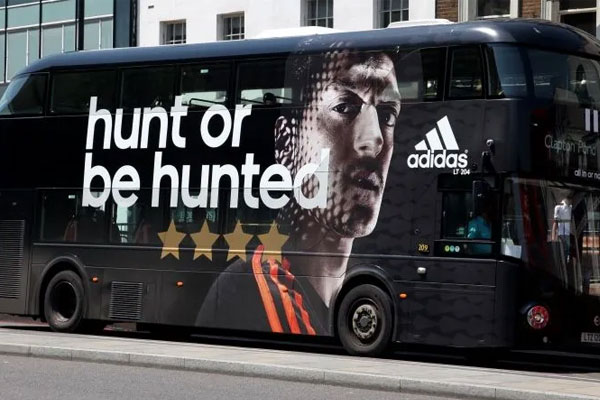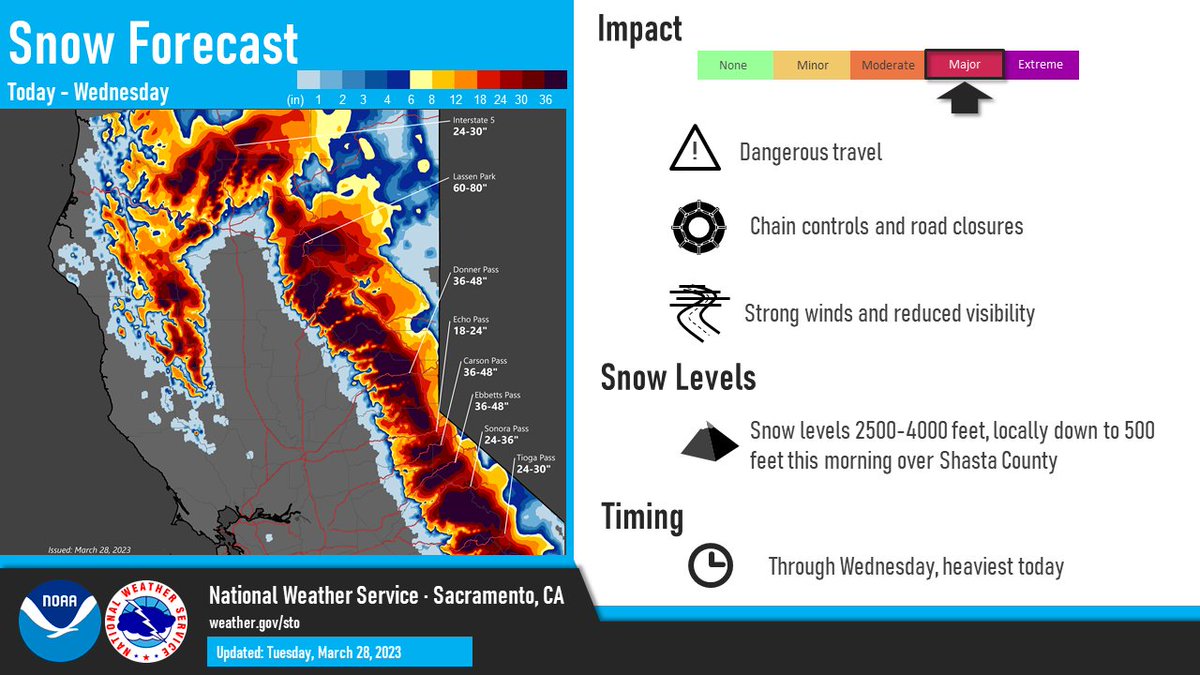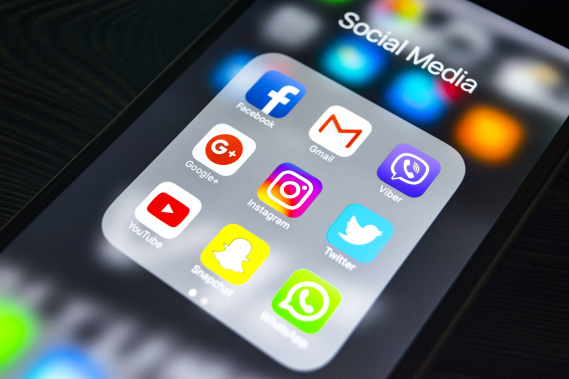
Influencer marketing is a powerful way to promote a brand or cause. It enables brands to target specific demographics and reach the right audience, which in turn leads to sales.
How to run a program:
To be a strong influencer marketer program, you need to first identify your key goals and then create strategies. This will ensure the best possible results and the highest return on investment.
You should start by identifying micro-and nano-influencers that are most relevant for your cause. These people will be able and willing to promote a product/service which aligns with the organization's mission, values, and vision.
Look for hashtags and search accounts that are sharing content relevant to your cause on social media. A great resource is your email list, which could be an excellent source of influencers because they love your cause and will likely share any content that you create.

Next, find out what makes an influential person different from other influencers. This will help determine if they would be a good fit for you and your organization. It could be their style of content, the frequency they post, or their engagement rates.
To get a better understanding of their reactions to content from influencers, you can use the platform's analytics tools. This will allow to identify your followers and give you insight into how you can help them succeed.
It is important to identify influencers with a relevant following and engaged audience. This will enable you to build strong partnerships with them and leverage their influence to grow your brand.
A micro-influencer generally means someone who has 1,000 to 30,000 followers. These people are usually bloggers, podcasters or social media users that focus on a specific niche. These influencers are an important addition to any non-profit's marketing strategy. It can offer a cost-effective way to increase your reach and brand recognition.
To make the most of an influencer's engagement, you should encourage them to follow your brand, comment on posts and interact with your content as often as possible. This will help you build a long-lasting relationship and encourage them to share your content through their own social media channels.

Think about when is the best time to reach influencers. They are more willing to work alongside brands in the beginning stages of their development. This allows you to get in touch with them early and negotiate a payment plan as well as content usage rights.
Next, pitch them about your brand and why they would be a good fit for their client. This may involve highlighting your mission and showing how the influencer will be able to help your organization achieve its goals. This will prove that they have the experience and expertise to do it and will also build credibility within their industry.
FAQ
Is there a way for me to get free traffic?
Free traffic refers to traffic which comes directly from organic search results. This type of traffic is known as organic traffic or natural traffic. There are many ways to get free traffic, such as article marketing, social media marketing, blogging, etc.
Article Marketing is one way to get free traffic. Paid ads are more expensive than the CPC. Article marketing is also referred to as content marketing.
Social Media Marketing - These social media sites, such as Facebook, Twitter or LinkedIn, allow you to advertise your business. These platforms allow you to share updates, photos, and establish relationships with potential customers. Many businesses opt to purchase ad space on social networks because they want to reach a larger audience for a more affordable price.
Blogging - Another great way to generate traffic is blogging. You'll attract visitors if you write quality content that people enjoy reading. Once your blog is attracting visitors, it's possible to make money from it by selling products and/or services.
Email Marketing - Email marketing has been around since the early days of the Internet, but today it still remains one of the best ways to drive traffic to your website. Email marketing is an effective strategy to grow your subscribers and eventually sell things.
How can I select my target audience?
Start with yourself and those closest to your heart. Do you not know where to start? Ask yourself "Whom do I want to reach?"
Ask yourself the following questions: Who are my industry's most influential people? What problems do they have to deal with every day? Which are the smartest people working in my field? Where do they hang out online?
Rewind to the beginning, when your business was founded. Why did you start? How did you solve the problem?
These answers will help to identify your ideal clients. They will also reveal their personality and reasons for buying from them.
For clues on who your competitors cater to, check out their websites and social media pages.
Once you have identified your target customer, you need to decide the best channel to reach them. An example: If you provide services to realty agents, you may create an informational website for home buyers.
A blog that targets small-business owners could be a possibility if you are a software provider.
A Facebook page for teens could be set up if you are a clothing seller. A Twitter account could be set up by restaurant owners to allow parents to search for places that are kid-friendly.
This is the point: There are many ways to communicate your message.
How much does it cost for social media advertising?
This route is not for everyone. You'll be charged monthly according to how long you spend on each platform.
Facebook - $0.10 Per 1,000 Impressions
Twitter: $0.20 per 1,000 impressions (if your tweet is on Twitter)
If you send out invitations to Linkedin, $0.30 per 1,000 impressions
Instagram - $0.50 Per 1,000 Impressions
Snapchat - $0.60 for 1,000 impressions ($0.40 Per User)
YouTube – $0.25 per 1000 views
Tumblr - $0.15 per 1,000 impressions for text posts.
Pinterest - $0.05 per 1,000 impressions per month
Google + - $0.15-$0.20 per 1 million impressions
Tumblr – $0.15 - $0.20 per 100,000 impressions
Vimeo - $0.20 to $0.25 per 10,000 impressions
Soundcloud - $0.20 to $0.0.25 per 1 Million Plays
StumbleUpon - $0.20 -$0.25 per 1 billion pageviews
Digg – $0.20 - 0.25 per 1000 diggs
Reddit – $0.20-$0.25 Per 1000 Comments
Wordpress – $0.20--$0.25 Per 500 Comments
Flickr - $0.20 -- $0.25 per 5,000 photo uploads
What should you know about TV advertising?
Television advertising is an extremely effective medium for reaching many people at once. It was also very costly. However, it can be powerful if you use the device correctly.
Although there are many kinds of TV ads to choose from, all share the same characteristics. When planning any TV ad, the first thing you should do is ensure that it fits within its category. Don't confuse a lifestyle ad with a product advertisement if you are running a commercial. Your message should be consistent across the entire campaign.
It is important to remember that ads are best aired during prime-time. This is because viewers tend to watch TV while sitting down in front the television. You want them to be able focus on your words and not get distracted by the TV.
Don't assume that just because you have lots of money, you will achieve great results. It may be the reverse. According to University of California research, commercials airing during popular shows are less likely to be seen and sell more products than those which air during unpopular shows. You should ensure that you spend your money wisely if you plan to advertise on television.
What are the basics of print advertising?
Print advertising can be a powerful medium for communicating with customers. It is used by many companies for promoting products and services. The key objective is to capture the attention of the consumer.
Print ads are usually one page in length and can include text, images and logos. You may also find sound, animation, video and hyperlinks.
The main types of print advertisements are classified as follows:
1. Brochures - These are large format printed pieces designed to attract people into stores. Brochures can often be adorned with brightly colored images and eye-catching designs.
2. Catalogues- These are smaller versions and variants of brochures. These are usually sent to customers who request information about specific items.
3. Flyers - These small pieces of paper are distributed at events like fairs and concerts. They can be given at retail outlets but must be paid for.
4. Posters – These are larger versions than flyers. They can be displayed on fences, walls, or buildings. These are often created with computer software programs to grab the attention of passersby.
5. Direct mail – These are direct mail letters and postcards sent to potential customers. These are sent periodically by companies to remind current customers about their business.
6. Newspaper Ads - These are placed in newspapers and magazines. They can be quite lengthy and often include text as well as images.
What is an Ad Campaign?
An advertisement campaign is a series containing advertisements to promote a product. It can also refer to the whole production of such ads.
The Latin word for selling is "ad." Marcus Terentius Varro (116–27 BC) was the first person to use it. It meant "to sell".
Large companies or agencies usually do advertising campaigns. There may be many media types involved, including print and television as well as radio, TV, and internet.
Advertising campaigns are typically long-lasting and have clear goals. For instance, some campaigns aim to generate awareness while others focus on increasing sales.
Radio advertising: What are your options?
It is important that you understand the differences between media. It is important to understand that all media forms are complementary and not competitive.
Radio advertising can be extended to television. It can reinforce key messages and provide additional information.
Radio listeners may find TV commercials too long. Radio ads are generally shorter and less expensive.
Statistics
- Worldwide spending on advertising in 2015 amounted to an estimated US$529.43 billion. (en.wikipedia.org)
- It collects money from the advertisers, keeps 32% for its role in facilitating the process, and the remaining 68% goes to the publisher (you). (quicksprout.com)
- Advertising spending as a share of GDP was about 2.9 percent. (en.wikipedia.org)
- In 1919 it was 2.5 percent of gross domestic product (GDP) in the US, and it averaged 2.2 percent of GDP between then and at least 2007, though it may have declined dramatically since the Great Recession. (en.wikipedia.org)
External Links
How To
How do I advertise on Google?
AdWords allows companies to purchase ads based on specific keywords. Set up your account first. The first step is to choose a campaign title, budget, ad type (text/image, video), and keywords. You then place your bids on these keywords. You only pay if someone clicks on your ads if they come from someone who searched for your targeted keywords. This way, you get paid even when people don't buy anything.
Google offers many tools to help ensure that your ads are effective. These tools include Ads Preferences Manager Manager, Keyword Planner and Analytics. These enable you to determine what is most effective for your business.
Keyword planners help you choose the keywords that will be used in your campaigns. It also shows you how much competition there is for certain keywords, helping you decide whether or not to spend money bidding on them.
To change settings such as the maximum number per day or the minimum cost per Click, you can use Ads Preferences Manager
Analytics lets you track the performance of your ads and compare them to competitors. You can also view reports that show how well your ads compared to others.